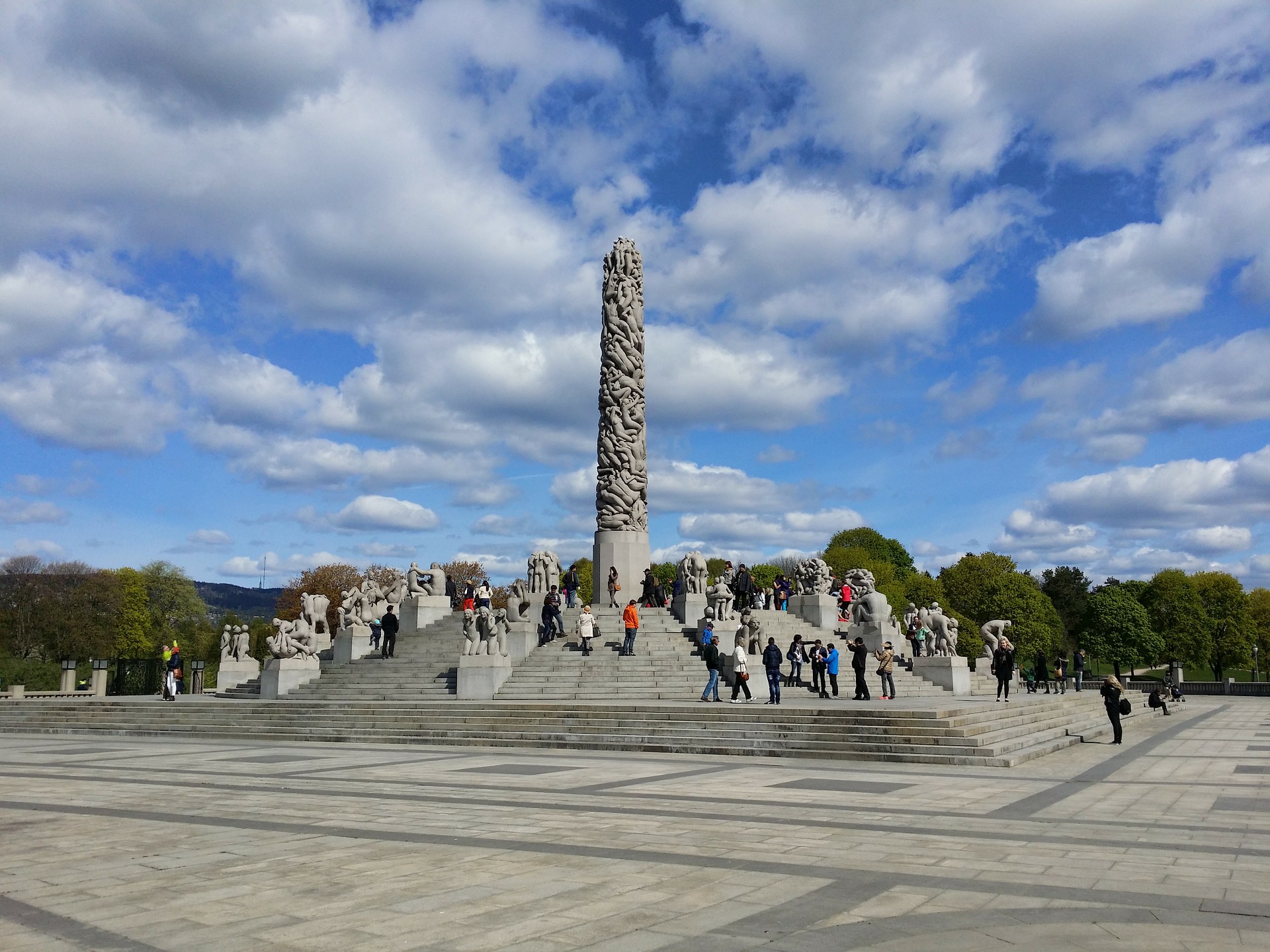Vigeland Sculpture Park
The Vigelandsanlegget , also Vigeland sculpture park or Vigelandpark, is located in the Frognerpark in Oslo, Norway. The Vigelandsanlegget shows 212 stone and bronze sculptures by the Norwegian sculptor Gustav Vigeland, which were created between 1907 and 1942. Numerous sculptures symbolize the cycle of human life. Among other things, the so-called "monolitten" shows the development from the embryo to the toddler and further all stages of life that a person goes through. The entire complex is a monumental collection of figures made of natural stone and bronze. The sculpture park was built between 1923 and 1943 and was created along a long, ascending axis in the Frognerpark. The complex begins at the foot of the hill with a bridge with 58 bronze sculptures, including the "Sinnataggen" . There follows a fountain with other bronze sculptures. A staircase leads up to the “Monolitten”, a 17 meter high column made of 121 figures from Norwegian Iddefjord granite, which is surrounded by 36 groups of figures. The end of the axis marks a group of bronze sculptures at the highest point of the layout, which represents the circle of life. Another large group of figures stands at the north-east end of a transverse axis that extends to the left and right of the fountain in the Frognerpark. Officially, the Vigelandsanlegget is not a park, but the name of the art installation with the sculptures of Vigelands within the Frognerpark, but the facility is usually referred to as "Vigelandpark" in German or English literature. The director of the Oslo Museum Lars Roede called "Vigelandpark" the "name of the tourists".
More details: https://en.wikipedia.org/wiki/Frogner_Park#Vigeland_installation_%E2%80%93_the_sculptures_in_Frogner



